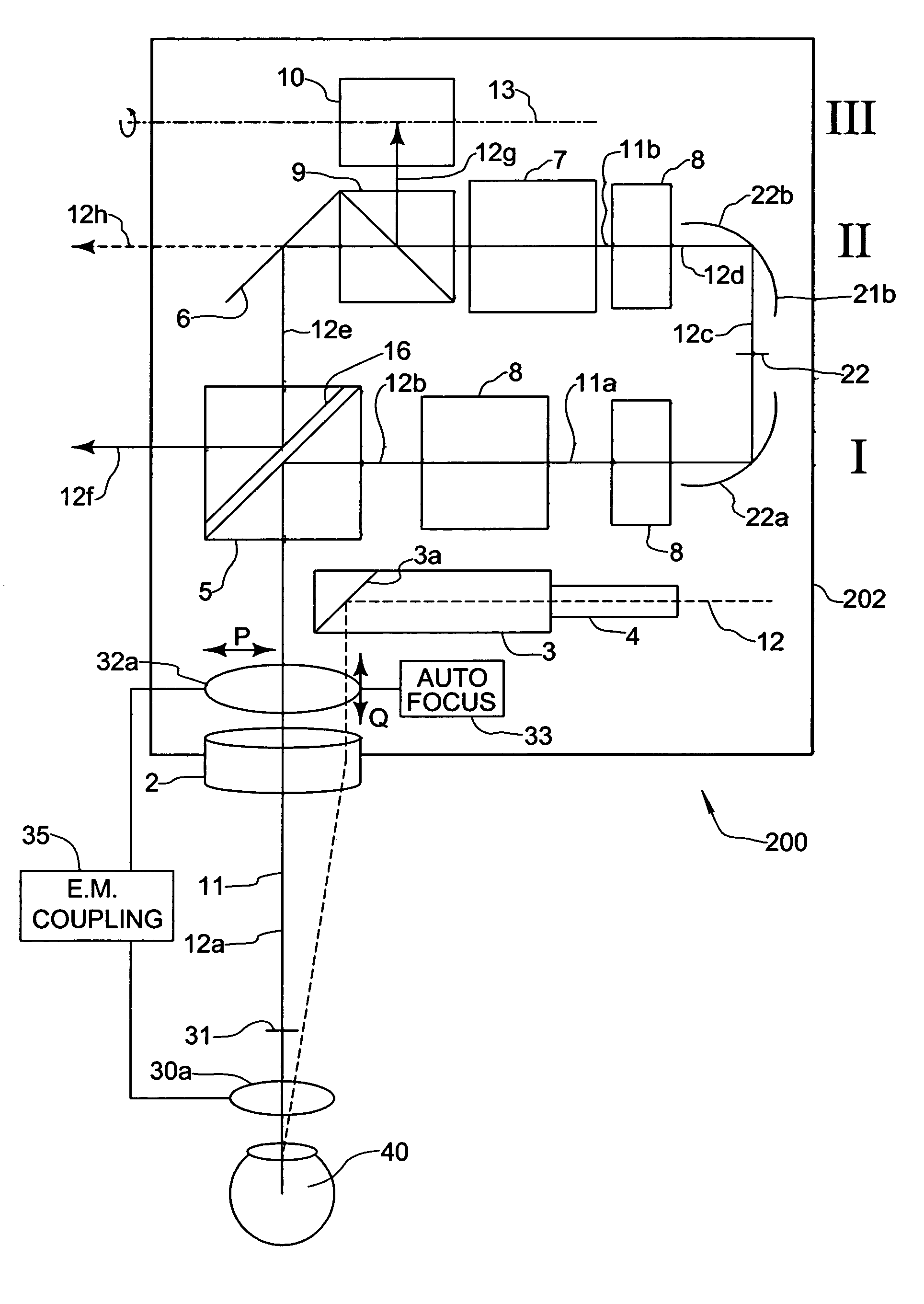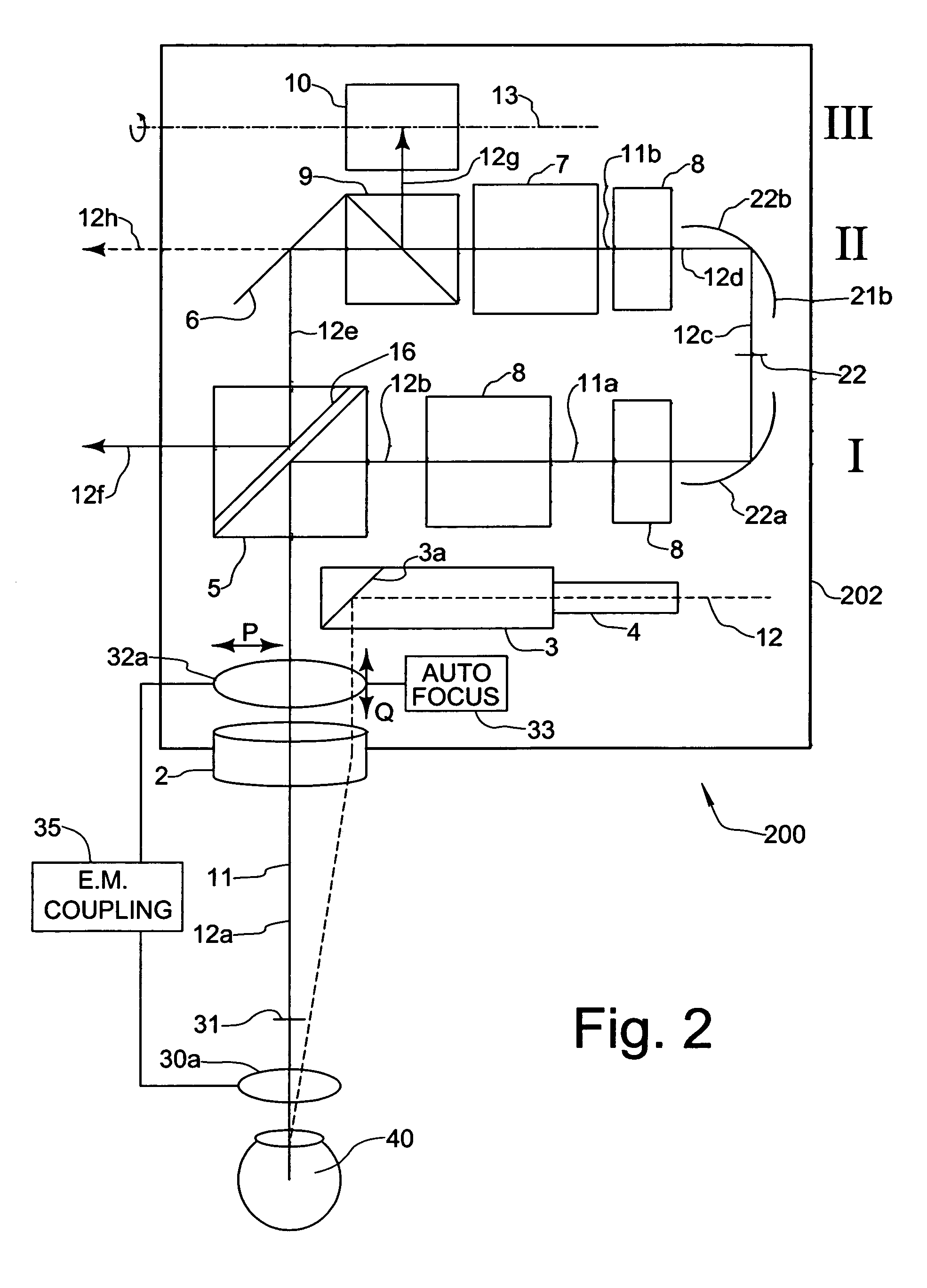Ophthalmoscopic stereomicroscope with correction component
a stereomicroscope and component technology, applied in the field of microscopes, can solve the problems of easy contamination, insufficient sterility of such supplementary optical systems, and disturbing the operation of surgeons,
- Summary
- Abstract
- Description
- Claims
- Application Information
AI Technical Summary
Benefits of technology
Problems solved by technology
Method used
Image
Examples
Embodiment Construction
[0026]A stereoscopic microscope with a conventional supplementary optical system for carrying out intraocular surgery is referred to as a whole by reference numeral 100 in FIG. 1. The stereoscopic microscope has a microscope body 102, in which a main objective 2 and a magnification system 7, especially provided as a zoom-system, are disposed as main optical components.
[0027]The microscope 100 further comprises deflector elements 5, 21a, 21b provided as plane mirrors. By means of these deflector elements, viewing beams 12a-12h, which emerge from an object 40 to be inspected, and which at first proceed substantially (at 12a) in a vertical direction through the main objective 2 along the optical axis 11 thereof, are deflectable into two substantially horizontally extending planes I, II of the microscope (at 12b, 12d). It can be seen that the magnification system 7 in the shown embodiment is disposed in the second plane II.
[0028]At the object side of the magnification system 7, selectiv...
PUM
 Login to View More
Login to View More Abstract
Description
Claims
Application Information
 Login to View More
Login to View More - R&D
- Intellectual Property
- Life Sciences
- Materials
- Tech Scout
- Unparalleled Data Quality
- Higher Quality Content
- 60% Fewer Hallucinations
Browse by: Latest US Patents, China's latest patents, Technical Efficacy Thesaurus, Application Domain, Technology Topic, Popular Technical Reports.
© 2025 PatSnap. All rights reserved.Legal|Privacy policy|Modern Slavery Act Transparency Statement|Sitemap|About US| Contact US: help@patsnap.com



